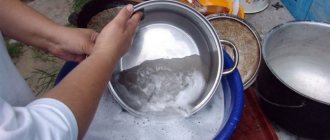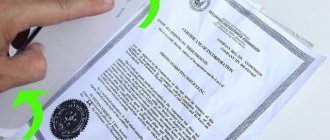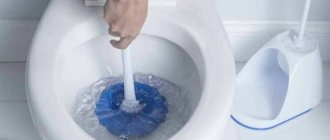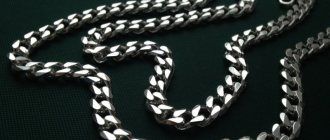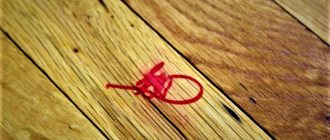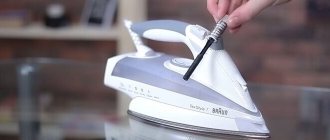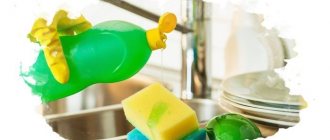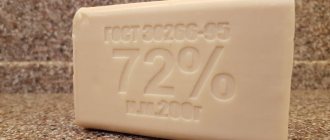A large amount of greasy layer on the surface of a tile or hob often makes us think about “How to wash off grease in the kitchen?” This is labor-intensive work that requires the use of effective tools.
Daily cooking involves the use of oil and fat, as a result of which they are splashed onto nearby surfaces, and vapors rise and settle on walls, ceilings, furniture, household appliances, and dishes.
A sticky, greasy coating attracts dust, resulting in the formation of persistent stains that cannot be removed by simply wiping the surface with water.
But how to clean the kitchen from grease and put it in order? There are many methods that involve the use of modern household chemicals. Folk methods that have stood the test of time are not inferior to them.
Why does grease appear in the kitchen?
Contamination from various objects is removed with appropriate means so as not to damage furniture or equipment. Before cleaning the kitchen, it is worth superficially assessing what material the set is made of and how dirty it is. To clean, you can turn to household chemicals and traditional methods.
Do not use aggressive chemicals on weak stains. The item will be cleaned, but its finish will fade. Enameled or wooden surfaces are especially sensitive to grease cleaners in the kitchen. But floors and ceramic tiles on walls usually tolerate the effects of any detergent well. Cleaning facades, when the time has come, requires an effective composition. Contaminants are difficult to remove from them and eat deep.
Traditional methods for removing fat deposits are considered gentle. Be careful with them. Acid solutions or undiluted baking soda can cause damage.
The surface of kitchen furniture becomes covered with a sticky, greasy coating over time. This is due to evaporation from hot food and settling condensation. It comes into contact with dust, turning into a sticky, dirty substance. Such contamination covers parts of the slab.
Kitchen parts near the cooking area are susceptible to oil splashes. These surfaces are more difficult to clean. It is easier to clean the kitchen from grease on the cabinets. The farther the object is from the stove, the less fat there is on it.
When plaque remains untouched for a long time, it thickens, constantly mixing with more dust and acquiring new layers. It is possible to clean the kitchen from this kind of grease, but it is painstaking work.
Which product should I choose?
To combat grease stains, it is necessary to choose the optimal kitchen product that will be effective and safe. If preference is given to household chemicals, then such compositions are sold in special containers of different packaging and have certain cleaning properties.
These are basically high-concentration solutions that can easily cope with any layer of dirt. In order to use the composition for its intended purpose, you must read the instructions for use.
But many housewives want to know how to wash off fat using simple folk methods that are environmentally friendly and completely safe. There are a lot of options and it’s worth talking about this separately.
Whatever method is chosen, greasy stains should be removed periodically; this will be the key to easy cleaning and quick tidying up of kitchen surfaces.
How to clean grease in the kitchen?
To get rid of plaque, you will need the cleaning agent itself. But there are recommendations for equipment for removing dirt. There is only one material - for the old layer of fat and the thin, recent one. This is a general set. They can both wash the kitchen and clean kitchen furniture from grease without unnecessary risk of damaging the surfaces. Basic tools:
- flannel cloth;
- cloth;
- microfiber;
- dish sponge.
A thick, sticky layer of plaque cannot be removed with hard brushes. Especially on wooden surfaces and enamel. These tools may not leave visible scratches at first. But abrasions will be noticeable when dirt gets stuck in them. It will be impossible to clean minor damage from it.
Such scratches are left by cleaning powder if it softens slightly in water. Powders that are not intended for enamel are not used to clean the stove, even when they dissolve grease well. Detergent compositions in the form of a gel or solution are mechanically safe. Liquid chemistry is considered gentle. Pay attention to the composition. When it contains acid or ammonia compounds. The product may render the headset unusable.
To test a new cleaning composition, you can test it on a small, inconspicuous area of furniture or equipment. A safe product will not leave abrasions and will not affect the condition of the “experimental” area.
Baking soda
Baking soda has an abrasive and antibacterial effect, which is very useful for removing bacteria and microorganisms from various surfaces.
Baking soda can be used to remove grease from furniture, walls, tiles, and almost all other surfaces. Baking soda is especially effective for cleaning dirty areas such as the stove, range hood, countertop, apron, cutlery, dishes, refrigerator, and other household appliances.
You will need:
- Baking soda
- Sponge, cloth
Application:
- Lightly dampen surfaces stained with grease and dirt.
- Sprinkle baking soda on the surface to be cleaned (as much as you think is needed).
- Then scrub with a sponge to remove any grease.
- You may need to dampen the sponge to make the cleansing process easier (you can use a little warm water or lemon juice).
- After cleaning, rinse the surface well and wipe with a clean cloth.
Using household chemicals
Household cleaning solutions do not harm enameled and polished surfaces. They are often used for general cleaning of the kitchen to eliminate scratches and abrasions. Tiles, especially those that are heavily soiled, tolerate powders better. This guides the consideration of detergents.
How to clean grease in the kitchen? Household chemicals are produced for different surfaces. There are universal substances. For sensitive materials - gentle detergents. They differ in composition and method of application. The main difference is the type of impact, which can be used to determine how the substance will affect furniture and equipment. Detergents are divided into several groups.
Powdered cleaning agents
Cleaning products in powder form are effective, but aggressive. They can be used to wash off old grease in the kitchen. But the powder leaves scratches on many surfaces:
- enamels;
- polished furniture parts;
- glass
There are mild powders. They lose some of their hardness when moistened. Even gentle powder can scratch the stove or table. Therefore, they are rarely used for headsets. The powder can be used to clean the walls of the kitchen from grease and old deposits in the corners of the floor.
Liquid household chemicals
These are solutions and gel-like detergents. Solutions are gentle - for enamel surfaces, intensive. For general cleaning and simple ones - used for regular cleaning.
The segment of these substances is wide. They are not capable of leaving scratches, but the substances in the composition can enter into a chemical reaction with the coatings. Therefore, enamel products are not used to clean other surfaces. They can corrode the polish or change the color of the furniture.
For general cleaning there are solutions or creams, granular pastes. These substances are safe for any coating.
Spray
You can use a cleaning spray to clean glass kitchen furniture. They are made with alcohol. It allows for streak-free cleaning thanks to rapid evaporation. Provides mirror shine. The substance is easy to apply.
Cleaning sponges
It's more of a cleaning tool than a substance that resembles dish sponges. They are produced in different hardnesses:
- made of soft wire;
- for damage-resistant coatings;
- melamine.
The material is impregnated with a powerful detergent. During wet cleaning, the sponge “soaps” and easily removes grease and dirt. The cleaning agent is powerful but safe. You can use a sponge to clean dishes. The impregnation is easily washed off and leaves no trace. The washing sponge is convenient for regular cleaning.
Chemical compositions for cleaning furniture and household appliances can be toxic. Many brands can ruin a headset. To avoid incidents, you should read the composition and recommendations. Make sure that the substance will not cause allergies in household members or their pets.
Always wear rubber gloves before cleaning the kitchen. To use aggressive detergents, you may need a face mask.
Cleaning chemicals, with the exception of eco-substances, are harmful. Depending on the brand, toxic properties can be significantly reduced, but not completely eliminated. Therefore, the substance is purchased after thoroughly studying the composition. Possible irritants, volatile compounds, and toxic compounds are treated with caution.
Household chemicals are created for extensive and dense stains. When the grease in the kitchen is old, it can be difficult to clean off otherwise. For light and medium plaque, it is safer (sometimes more effective) to turn to traditional dirt removal techniques.
Coffee grounds
Coffee grounds are considered one of the most effective and environmentally friendly solutions for getting rid of old grease stuck to dishes and kitchen surfaces. It has many beneficial properties when used in moderation. In addition, the coffee aroma helps remove unpleasant odors.
You will need:
- Wet coffee grounds
- Sponge, cloth
Application:
- Apply coffee grounds to pans, dishes, and other surfaces that need to be cleaned.
- Rub the items with a sponge.
- It is recommended to use rubber gloves to prevent the coffee solution from getting under your nails.
- After cleaning, rinse objects and surfaces with lukewarm water and wipe with a dry cloth.
Important : the coffee must be very finely ground, uniformly ground, without large particles (they can subsequently damage the surface being cleaned).
It is possible that the recommended folk remedies are not as effective as aggressive chemicals from the store. However, if you use them in accordance with our advice, you can see that they are an excellent alternative to replace expensive products that can be harmful to your health.
How to clean the kitchen using traditional methods?
Such methods are not always simpler. But they protect furniture and family members. They are based on the properties of simple substances and compounds common in everyday life. Below are options for cleaning kitchen furniture from grease.
Alcohol with vinegar
Prepare the detergent by mixing 1:1 water and alcohol. Instead of pure alcohol, you can add vodka (2:1). The solution reacts with grease and oil stains and dissolves them. During cleaning, the surface is disinfected. How to use:
- Before cleaning the kitchen using this method, put on a mask. The substance has a pungent odor and irritates the mucous membranes.
- The solution is sprayed onto dirty surfaces in the area of stains.
- Leave for 5-10 minutes.
- The dissolved plaque is wiped off with a damp cloth.
To give the room a pleasant smell after cleaning, you can add essential oils to the mixture. After the alcohol evaporates, the aroma remains. The mixture can be used to remove grease from MDF kitchens, household appliances, enamel and tiles.
Baking soda
Baking soda degreases kitchen surfaces, turning grease into soap. For complete cleansing, baking soda is mixed with laundry soap. This will ensure disinfection and thorough removal of contaminants.
To prepare the detergent, fine soap shavings are diluted in warm water. Contaminated areas are washed with this solution. Moistened areas are treated with soda. It is poured onto a sponge like cleaning powder. Wipe the dirty area with soapy water until it is clean.
To clean wooden kitchen furniture, add vegetable oil to the soda powder. The resulting paste is applied to the stains. After 15 minutes, clean the surface with a sponge and wipe off any remaining substance.
Cleaning techniques with powder can damage enamel and thin coatings. To wash cabinets made of sensitive materials in the kitchen, use a solution of soap and soda. Add half a glass of soda to soapy water. Stir until completely dissolved. The product is applied to the surfaces and everything is washed with a sponge.
Since the composition is not toxic, baking soda can be used to clean dishes:
- frying pans;
- baking sheets;
- barbecue and grill grates.
For intensive cleaning of kitchen utensils and the internal surfaces of household appliances, hydrogen peroxide is added to the soda.
Lemon acid
Less aggressive substance than industrial acids. Copes with light and medium dirt. But it becomes more effective in combination with other methods. How to clean grease in the kitchen with citric acid:
- 1 sachet of the substance is diluted in 0.5 liters. water.
- The solution is applied to the area of contamination using a spray bottle.
- Citric acid does not corrode enamel coatings. It can be applied liberally.
- The substance is left for 10-15 minutes.
- The remaining dissolved fat is wiped off with a damp microfiber or sponge.
The substance can dissolve hard plaque or clean a sooty area. To do this, prepare paste. Add a little water to the acid powder. Stir until it becomes a slurry, which is used for cleaning.
Sea salt
This substance can clean the kitchen from grease due to the concentration of marine microelements. Removes oil stains and light grease deposits. Cleaning is not gentle. It may damage sensitive material. Instructions on how to clean kitchen furniture with salt:
- Add water to sea salt and stir. It should be a paste.
- It is applied to oily areas of furniture.
- Leave for a few minutes.
- Wash carefully.
- Afterwards the surface is cleaned.
Salt can be used to clean tiled surfaces. The substance is ground into a fine abrasive and used as a cleaning powder. Be sure to wear gloves while working. Fine powder irritates the skin.
Ammonia
The treatment is carried out in a ventilated area, making sure to protect the mucous membranes. Pets are restricted from entering the kitchen during processing. Ammonia vapors can seriously harm the health of pets.
Ammonia is a volatile substance. It smells sharp and removes grease well. Ammonia quickly evaporates, just like simple alcohol (or vodka) does not leave streaks on surfaces. To clean the kitchen from grease with ammonia:
- 1 tbsp. substances are diluted in 1 liter. water.
- Contaminated surfaces are sprayed with a spray bottle or treated with a sponge soaked in an ammonia solution.
- Even in low concentrations the product will smell strong.
- It is left for 5-10 minutes to act.
- Then wipe the coating with a damp cloth.
- After processing, the kitchen will have to be ventilated.
Folk recipes for cleaning grease in the kitchen are multifaceted. They are combined and new ones are constantly invented. But such methods often cope with small or weak stains, fresh splashes of oil. To wash away old grease in the kitchen, use household chemicals. It's stronger.
General recommendations
Follow these tips:
- Wipe off greasy drops immediately so they don’t have time to dry.
- Test the detergent on a small area first. Treat the surface with the composition, wipe and check the color of the coating after a couple of minutes.
- Do not use harsh abrasives such as powder, otherwise you will damage the top layer of wood or painted surfaces.
- Use soapy water, baking soda, and salt to clean the fittings. Do not use vinegar, alkalis, citric acid or hydrogen peroxide to avoid damaging the metal.
- At the end of cleaning, wipe the kitchen with a damp and dry microfiber cloth - this will remove any remaining cleaning product and stains.
Steam cleaning
There is a separate folk method for caring for kitchen surfaces. It is based on the surface cleaning application of a clothing steam generator. As a purely cleaning device, the steam generator is questionable due to its price. But steam cleaning is effective due to high temperatures - up to 1000 °C. Under this influence, serious contaminants can be removed. How is the method different:
- The steam generator allows you to clean grease in the kitchen, even when the plaque has long frozen.
- High cleaning speed.
- Disinfection of surfaces with high temperature. Steam kills pathogens and fungi.
- Steam can be used to clean kitchen facades from grease, remove burnt marks and scale.
- The method is safe for walls, furniture, wood. Does not damage most surfaces.
- The steam generator is safe. There are no chemicals involved in its operation. They can be used to process dishes, baking sheets, and racks.
- Removing unpleasant odors.
It is worth noting that steam adds shine to glossy and glass surfaces after treatment.
White vinegar
In the process of cleansing and removing impurities, this product has very similar qualities to apple cider vinegar. Table vinegar 9% and vinegar essence 70% clean and disinfect surfaces and eliminate unpleasant odors. They also help to wash and remove even old grease on almost any surface.
You will need:
- 1/2 cup white table vinegar 9% (125 ml)
- 1/2 cup water (125 ml).
- Sponge, cloth
Application:
- Dilute table vinegar in water and bring this product to a boil.
- Cool the product to room temperature.
- Place the liquid in a spray bottle and use it to clean doors, windows or kitchen appliance surfaces.
- You can pour the vinegar solution into a spray bottle.
- If the grease is too sticky, make a cleaning paste: combine a vinegar solution with 1-2 tablespoons of baking soda. The amount of vinegar solution depends on how thin the paste you need to make.
- Repeat application of the product as many times as necessary.
- After cleaning, rinse objects and surfaces with lukewarm water and wipe with a dry cloth.
Prevention - how to prevent the formation of fat deposits?
It is completely impossible to prevent fatty deposits. But with the help of prevention, you can reduce the frequency of general cleaning. Pollution will become less intense. It will be easier to remove them. What are the preventive measures:
- Frequent ventilation of the kitchen and dining room. Turning on the hood while cooking. The hood prevents dirt from sticking to surfaces. You will have to use the grease cleaner in the kitchen less often.
- Place film on the shelves of the refrigerator and cabinets. Contamination will settle on the film, but the coating itself will remain clean.
- Careful handling of ingredients during cooking. Small particles scattered to the sides are the basis for contamination.
- When frying food in a frying pan, it should be covered with a lid or sieve to prevent splashing. Remove unused dishes from the stove so that drops of oil do not settle on them.
- Regularly wipe furniture and fittings with a damp sponge or rag. Superficially cleaning the kitchen once a week is enough to delay the time for general cleaning.
- Maintain hand hygiene. Do not touch surfaces with fingers contaminated with oil or flour. Soon a dirty stain will form around the handprint.
Keeping the kitchen clean is an unspoken hygiene rule. Insect pests will not settle in such a room, the food will not be contaminated with microorganisms, and the mood of the household will be bright. Traditional methods and household chemicals help keep your home clean. And prevention helps maintain order. The dining room is the most comfortable place in the house. A kitchen cleaned of greasy deposits has a good effect on the psychological and physical state of the residents.
Soda-oil mixture for wooden surfaces
For wooden kitchens with unpainted surfaces, but coated with various impregnations such as varnish, oil, wax, a mixture of vegetable oil (1 tablespoon) with soda (1.5 tablespoons) is suitable. The resulting mixture is applied in an even layer to the contaminated surface. Be prepared for the fact that some of the soda will crumble, but the oil, absorbed into the wood, literally immediately makes it cleaner, adding a little brightness. All that remains is to remove the remaining soda with a soft, slightly moistened cloth.
It is recommended to clean kitchen furniture at least once every 60 days. The unpleasant aspect of the soda-oil solution is that the light surface of kitchens can acquire a yellowish tint. The positive side is that the mixture not only copes with old stains of grease and soot deposits, but also protects the wooden surface from dirt and water absorption, clogging its pores.
Lemon acid
Lemon easily removes stains, grease, plaque, limescale and tarnish.
Directions for use: For kitchen cabinets, mix 15 g of acid with a liter of water. Pour the solution into a spray bottle and spray all surfaces thoroughly. Wait half an hour and wipe the facades with a sponge.
Shades: For new stains, a regular slice of lemon is enough. Cut a piece and rub generously with it. And here the mechanism is always the same: wait, wash and dry. The light and fresh aroma will be a pleasant bonus.
Alcohol
Many housewives, not knowing how to remove grease from kitchen cabinets at home, read forums. It is always interesting to learn from other people's experiences in order to understand which method should be used. Effectively removes fat with vodka or alcohol. You can use alcohol to clean shiny headphones. If you want to use this tool, first open a window indoors.
To obtain a cleaning solution, you need to mix a tablespoon of alcohol with a liter of water. The product can be applied with a sponge or sprayed from a spray bottle. The solution should be kept for at least 30 minutes. Remove it with a damp cloth.
It is not necessary to use alcohol to remove grease. Vodka will also work. In its pure form, apply with a sponge to dirt. Wipe the cleaned surface with a damp cloth. If you believe the reviews, this method allows you to deal well with fat deposits.
- How do you clean grease from kitchen cabinets? Chemical soda Citric acid Hydrocarbon soap Laundry soap I use another product
